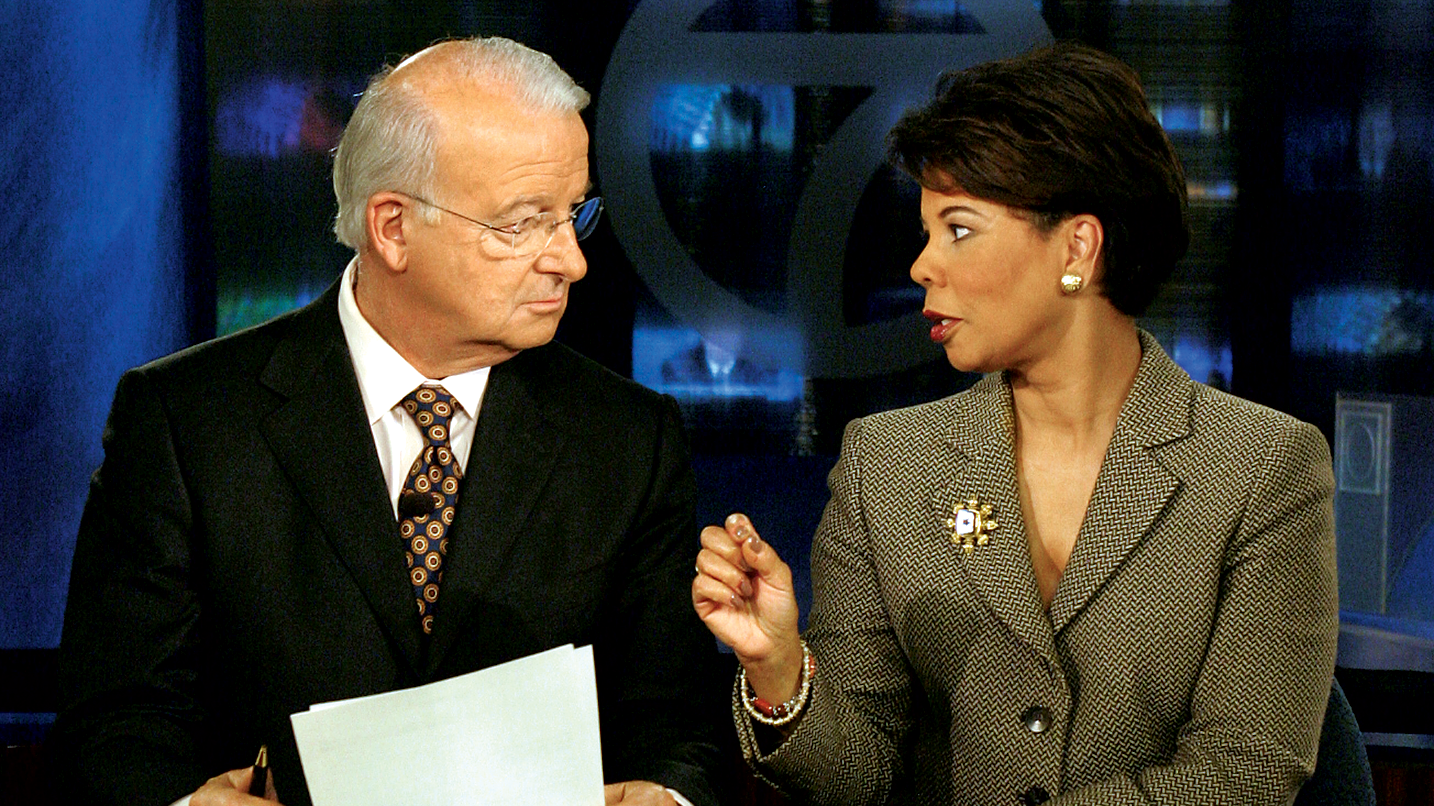On January 31, staff at WJLA gathered around a pair of sheet cakes for a sendoff to a pair of Washington TV heavyweights: Maureen Bunyan, a 44-year veteran of local airwaves who in 1978 became one of the first female African-American anchors in the US, and Bruce DePuyt, who for 14 years hosted NewsTalk, the rare public-affairs show that was actually fun to watch.
The cakes were, by this point, a familiar ritual. Anchors Leon Harris and Gordon Peterson, sports anchors Alex Parker and Tim Brant, and entertainment-reporter legend Arch Campbell are among those who have also exited over the past three years.
At another station—or another time—this type of turnover might suggest a crisis. In the golden age of local TV news, anchors were central to a station’s identity. “The thing about Washington, DC, is it takes years for an on-the-air talent to earn name recognition,” says Campbell. That connection with the audience is built not just on the air but through hundreds of rubber-chicken dinners, stints emceeing community events, and, more recently, building followings on social media. Anchors influence newsroom culture and provide goodwill that keeps bringing viewers back, says Al Tompkins, who teaches broadcast journalism at the Poynter Institute, a journalism think tank (where I used to work).
So why would WJLA let more than a century’s worth of name recognition walk out the door? Or, stranger still, why would it nudge them?
In the case of Channel 7, the on-air changes are part of a bigger behind-the-scenes transition. In 2014, longtime owner Allbritton Communications—whose patriarch bequeathed the station (formerly WMAL) his own initials, JLA—sold its TV business to Sinclair Broadcast Group. Headquartered in suburban Baltimore, the firm has grown rapidly by snapping up small groups such as the one WJLA was part of.
Campbell and Peterson left quickly, after Sinclair pushed out general manager Bill Lord. The other stars departed more slowly, amid a slow change in Channel 7’s look and feel. WJLA began carrying “must run” stories from corporate that echoed Sinclair’s conservative politics. Even WJLA’s famous “zipper” sign on its Rosslyn headquarters—the one you could see on some flight approaches to Reagan National Airport—vanished last year. (A spokesperson for its building said last summer that it will return.)
All these subtractions fuel worries among employees and viewers: Does local news still matter to Sinclair?
“Local news is at the heart of Sinclair,” says Scott Livingston, the company’s vice president of news. In fact, at two meetings the day after news broke that Bunyan was among 20 or so people getting the heave-ho, WJLA stressed that point via a jargon-heavy video and a PowerPoint presentation for staffers, who later received a gift bag containing a plaque with Sinclair’s new vision statement: “Connecting People With Content Everywhere.”
***
The company is indeed growing. It owned 58 stations in 2011; today it has 173 and is looking for more. If, as some in the industry suspect, the government eases restrictions on the percentage of households a broadcaster may reach, the question for all station owners is one of scale: How big an audience can you serve to advertisers?
Growing corporations naturally seek efficiencies—HR departments that can be combined, vehicle contracts that can be renegotiated. For Sinclair, a key part of getting big is sliding content from one station to another. Having a Washington operation offers a prestigious way to do that.
But a muscular operation covering the capital city—as opposed to Washington the hometown—might do more. For a time, Sinclair hoped to turn NewsChannel 8, the locally focused cable station that shares a newsroom with WJLA, into a national conservative cable channel like Fox. Thus far, the dream hasn’t taken wing, though former CBS reporter Sharyl Attkisson’s right-leaning weekly show, Full Measure, is now seen in 81 markets.
Inside Sinclair’s operations, employees point happily to investments in gizmos such as new editing software and a content-management system that makes it easy to share stories across all the stations. Yet the company’s overt political conservatism feels strange to employees accustomed to apolitical local news. More to the point, staffers say, Sinclair’s unyielding focus on the bottom line makes the Fox Lite stuff feel kind of . . . light.
The question appears to be whether all this disruption is driven by low ratings—WJLA’s evening newscasts are in third place in the area—or the more than $4 billion in debt Sinclair has taken on to fund its expansion, which also includes Tennis Channel, the sci-fi channel Comet, and the millennial-focused digital-media property Circa. You need a lot of revenue to hold a debt that large; the company expected debt service, stock buybacks, and dividends to account for nearly half its cash flow in 2016.
Making things more complicated still: Political advertising last year wasn’t the bonanza the industry had hoped. Trump didn’t buy as much airtime as Hillary Clinton, and locally, Virginia’s no longer enough of a swing state to inspire big spending. There’s only so much Barbara Comstock and LuAnn Bennett can do for the balance sheet.
Sinclair says no financial pressures from above led to the beloved TV personalities’ exits: The “suggestion that financial decisions were the driving concern behind recent changes is false,” Livingston says. Local stations, not corporate, he explains, make the decisions, which are “guided by ratings, our long-term strategy, and the evolving needs of our viewers.”
In fact, Sinclair lists hundreds of new broadcast jobs on its website. But it’s also true that in a glamorous field like TV, people who are lesser-known will often work for less.
Most casual viewers, especially younger ones, don’t really care who’s doing the news. So why worry about the departure of a few veterans? “Because most news is about the same,” Tompkins says. “So a difference is whether I trust the person who is talking to me.”
This article appears in the March 2017 issue of Washingtonian.


















